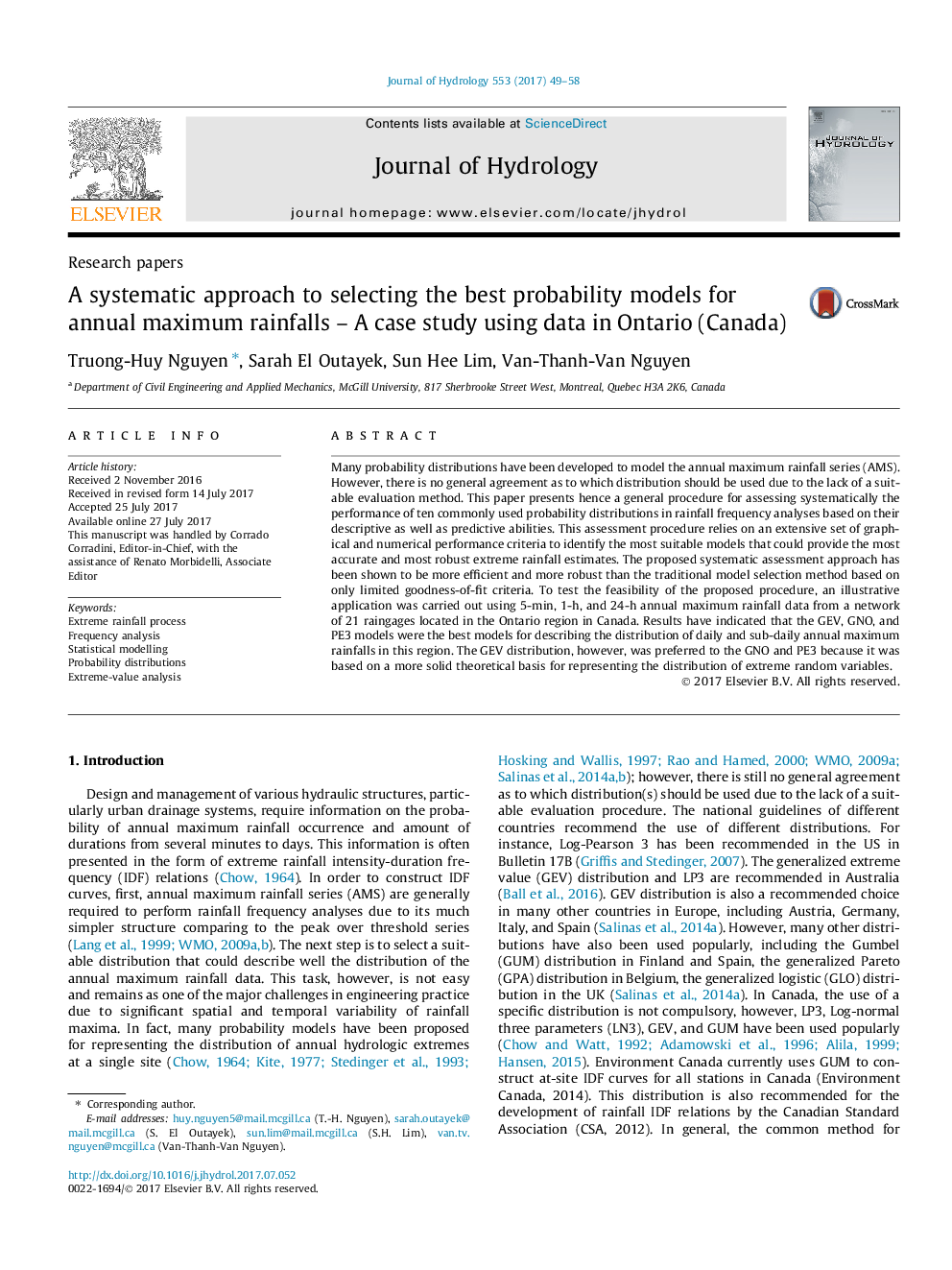| Article ID | Journal | Published Year | Pages | File Type |
|---|---|---|---|---|
| 5770800 | Journal of Hydrology | 2017 | 10 Pages |
Abstract
Many probability distributions have been developed to model the annual maximum rainfall series (AMS). However, there is no general agreement as to which distribution should be used due to the lack of a suitable evaluation method. This paper presents hence a general procedure for assessing systematically the performance of ten commonly used probability distributions in rainfall frequency analyses based on their descriptive as well as predictive abilities. This assessment procedure relies on an extensive set of graphical and numerical performance criteria to identify the most suitable models that could provide the most accurate and most robust extreme rainfall estimates. The proposed systematic assessment approach has been shown to be more efficient and more robust than the traditional model selection method based on only limited goodness-of-fit criteria. To test the feasibility of the proposed procedure, an illustrative application was carried out using 5-min, 1-h, and 24-h annual maximum rainfall data from a network of 21 raingages located in the Ontario region in Canada. Results have indicated that the GEV, GNO, and PE3 models were the best models for describing the distribution of daily and sub-daily annual maximum rainfalls in this region. The GEV distribution, however, was preferred to the GNO and PE3 because it was based on a more solid theoretical basis for representing the distribution of extreme random variables.
Related Topics
Physical Sciences and Engineering
Earth and Planetary Sciences
Earth-Surface Processes
Authors
Truong-Huy Nguyen, Sarah El Outayek, Sun Hee Lim, Van-Thanh-Van Nguyen,
